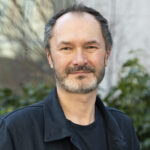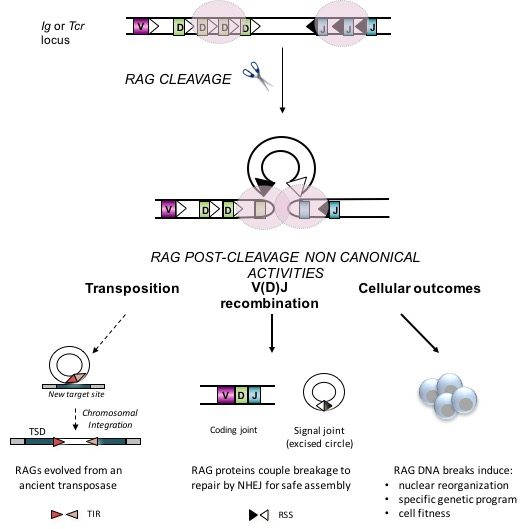Link to Pubmed [PMID] – 27863852
Mech Ageing Dev. 2016 Nov 15. pii: S0047-6374(16)30263-9. doi: 10.1016/j.mad.2016.11.003. [Epub ahead of print]
DNA double-strand breaks (DSBs) are commonly seen as lesions that threaten genome integrity and contribute to cancer and aging processes. However, in the context of antigen receptor gene assembly, known as V(D)J recombination, DSBs are obligatory intermediates that allow the establishment of genetic diversity and adaptive immunity. V(D)J recombination is initiated when the lymphoid-restricted recombination-activating genes RAG1 and RAG2 are expressed and form a site-specific endonuclease (the RAG nuclease or RAG recombinase). Here, we discuss the ability of the RAG nuclease to minimize the risks of genome disruption by coupling the breakage and repair steps of the V(D)J reaction. This implies that the RAG genes, derived from an ancient transposon, have undergone strong selective pressure to prohibit transposition in favor of promoting controlled DNA end joining in cis by the ubiquitous DNA damage response and DNA repair machineries. We also discuss the idea that, in addition to being essential for the rearrangement of antigen receptor genes, RAG-mediated DSBs could impact cellular processes and outcomes by affecting genetic and epigenetic programs.



